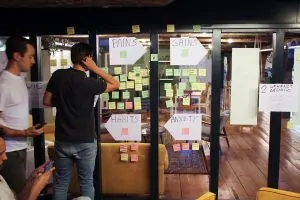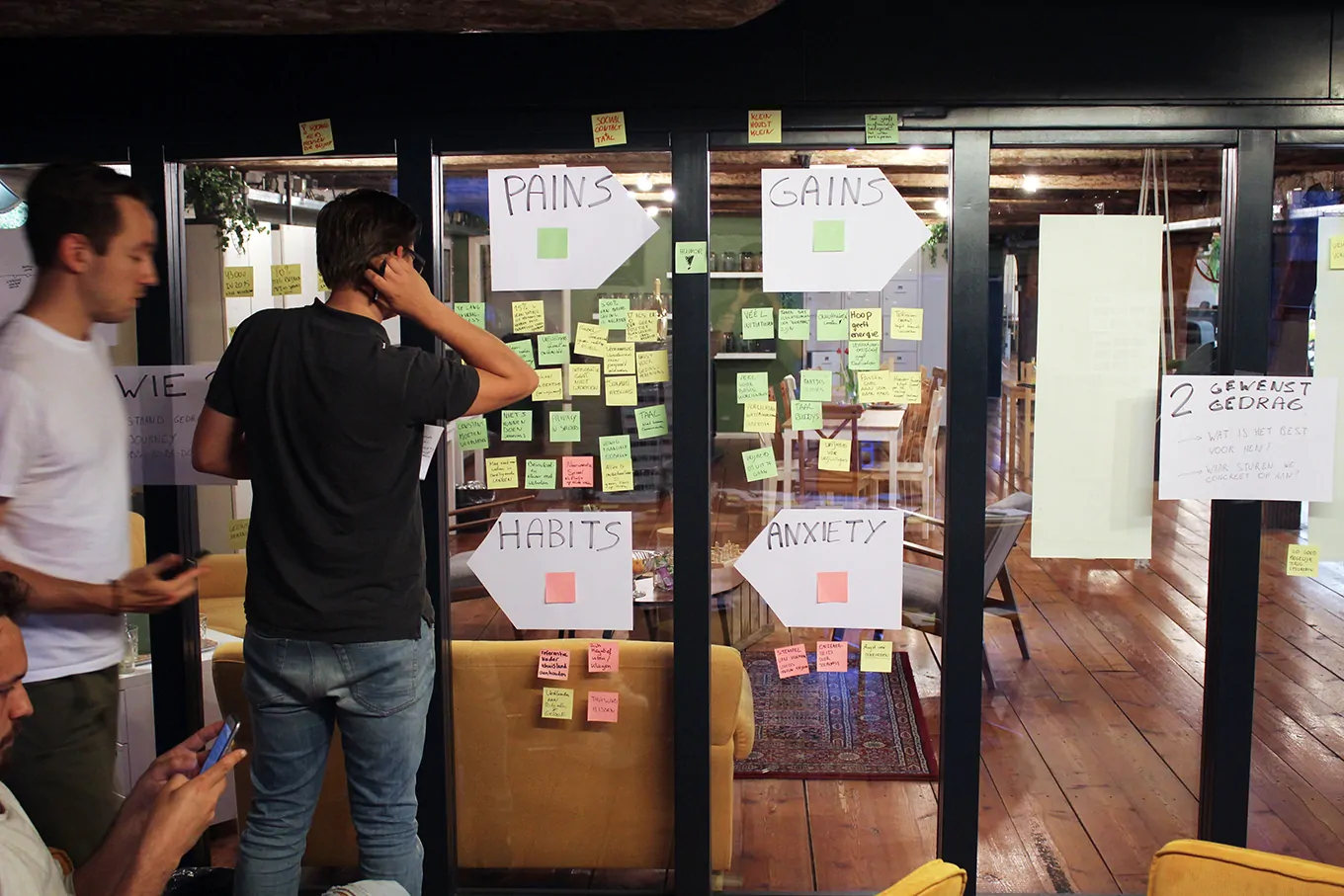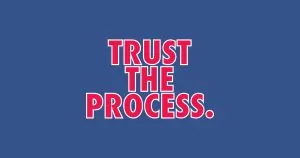A Design Sprint is a thrilling experience. You get to collaborate with your clients on trying to crack problems that deeply concerns them. However, a Design Sprint also requires a big leap of faith. What you ask them is to agree on a process, much more than an outcome. That’s not a small thing to ask. You will need to take away a couple of anxieties first. Not only to reassure them, but also to give them the ammunition to persuade their stakeholders. I want to share five insights we’ve learned over the last couple of years.
Tip 1: Address process anxiety at the start of the sprint.
I always begin my sprints with a “trust the process” slide. I acknowledge that their will be times when they will become a bit impatient, or that they will become worried about where the outcome is heading. I warn them that a design sprint is a systematic creative approach to turn profound insights on how their customers think and behave into innovative solutions. The best way to come up with new answers to solving problems is to be patient and to resist the urge to come up with ideas and solutions too fast. When you address this at the start of your sprint, you can come back to it easily whenever friction arises.
Tip 2: Explain why research and prototyping is so valuable

Tip 3: Take away budget anxieties by anchoring the alternative
A Behavioural Design Sprint requires a considerable investment of time and money. You can’t do a sprint properly if you haven’t got a full-time dedication from your clients. Moreover, a Sprint with experienced Sprint Facilitators also requires a financial commitment. However, look at it this way: First of all, there’s a huge hidden cost of not developing a strategy through rapid prototyping. Imagine you come up with a strategy yourself and you ask your advertising/digital/design agency to execute it. Only to find out that you acted on the wrong assumptions after you produced the whole campaign or designed the product innovation. A (Behavioural) Design Sprint – and the act of prototyping and testing – at the start of your process minimizes this risk and maximizes the chances that you will be doing the right things and doing them right.
“There’s no such thing as a smooth waterfall from research to strategy to creativity to production. In every step of the process, everyone always wants to reinvent the wheel all over again”.
Another way to look at the cost of a behavioural Design Sprint is to compare it with how things are usually done. First clients pay a research agency to do the research. Then they hire a strategy consultancy to help with the strategy. Then they hire a design or advertising agency to bring the strategy to life. Not only do they need to pay three different agencies, but the level of noise and the loss of insights that this process produces is just gigantic. There’s no such thing as a smooth waterfall from research to strategy to creativity to production. In every step of the process, everyone always wants to reinvent the wheel all over again.
Tip 4: Make your client fall in love with the customer problem
A design sprint is a highly structured process to explore new answers for critical marketing or business problems. One of the first things you realize when you start with your customer interviews is that the briefing nearly always is asking the wrong question. The question we tend to ask is the question of how to improve our products and services to get people to buy them. After a couple of customer interviews, you always realize you’re asking the wrong question. You will come up with more intriguing answers when you turn the question outside-in:
“How might we help people to achieve their goals, dreams, and desires in the best possible way?”
Once the sprint team falls in love with the Job-To-Be-Done of the target audience at the offset of the sprint, the sprint becomes way more interesting. (Check out this 4 minute video in which we explain Job-to-be-Done thinking)
Tip 5: Create a shared language
I always found that once the sprint team embraces a shared language to look at the sprint goal, to define the real customer problem and to ask the right questions in the ideation round, magic starts to happen. For us, this is one of the most powerful benefits of our Behavioral Design Method. However, this applies to every human-centric framework you will use. When everyone is trying to answer the same customer-centric questions like “Are we really solving the customer’s Job-To-Be-Done, or “Is this a real customer pain?” or “Are we sufficiently taking away anxieties and other barriers” or “What can we do to make the desired behaviour easier?”, you will witness that you have created a group that is will dedicate itself to solve the problem together.
Three Cardinal Sins against Customer Centricity in Finance
Three Techniques that will Supercharge your team’s creativity
Why research is too important to leave it to market research agencies (Dutch)
De onzin van het opsplitsen van onderzoek, strategie, creatie en productie
—
Learn more about SUE’s Behavioural Design Sprint, a five-day sprint to solve critical marketing and business problems. We combine the method of Design Thinking with principles from Behavioural Psychology to discover human insights, come up with solutions that change behaviour and test them right away with the target audience to learn what works and why.
|

